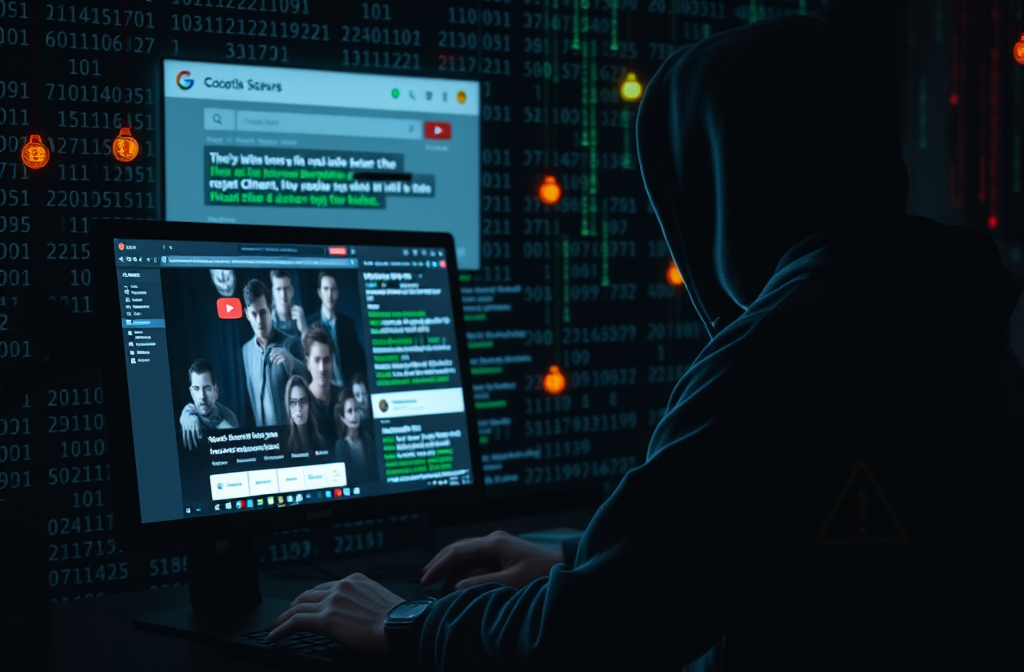Infostealer Threats on YouTube and Google Search
In the ever-evolving landscape of cybersecurity, one of the latest trends is cybercriminals leveraging popular platforms like YouTube and Google Search to distribute infostealing malware. These platforms, typically trusted for entertainment and information, are now being exploited to steal sensitive personal data from unsuspecting users. In this blog, we’ll explore how cyberattackers are using YouTube and Google Search to spread malware, and how you can protect yourself from these growing threats.
Table of contents
- How Cyberattackers Exploit YouTube for Malware Distribution
- Google Search Manipulation: A New Cyberattack Strategy
- Why You Should Be Cautious About Downloading Software Online
- Tips for Protecting Yourself Against Infostealers and Malware
- Conclusion: Stay Vigilant Against Infostealers on YouTube and Google Search
How Cyberattackers Exploit YouTube for Malware Distribution
YouTube, the world’s second-largest search engine, is becoming a prime target for cybercriminals looking to spread infostealer malware. Attackers are embedding malicious links in video descriptions, comments, and even posing as legitimate software guides offering cracked or pirated software. Once users click these links, they are unknowingly downloading malware that steals passwords, credit card details, cryptocurrency wallet information, and other private data.
What makes this attack even more dangerous is the use of reputable file hosting services like Mediafire and Mega.nz to hide the true nature of the malware. These platforms are trusted by users, which makes it easier for the malicious files to slip past antivirus filters and deceive potential victims.
Google Search Manipulation: A New Cyberattack Strategy
Google Search, a go-to resource for millions of users, has also become a target for cyberattackers. By manipulating search results, attackers can present malicious download links disguised as legitimate software or helpful tools. These deceptive search results often lead users to infostealers that steal sensitive data from browsers and devices once executed.
The malware associated with these malicious downloads can infiltrate personal or business data, making it essential for users to stay cautious when clicking on search results that seem too good to be true. Even seemingly innocent software tools or games can harbor these dangerous threats.
Why You Should Be Cautious About Downloading Software Online
As cyberattacks continue to evolve, the risks of downloading software from unverified sources have increased significantly. Whether it’s from YouTube, Google Search, or third-party sites, downloading cracked or pirated software opens the door to malware infections. This puts your sensitive personal information at risk, including passwords, bank account details, and even cryptocurrency holdings.
Tips for Protecting Yourself Against Infostealers and Malware
To avoid falling victim to infostealer malware and other cyber threats, consider following these protective measures:
- Use Trusted Sources: Only download software from official, reputable websites to reduce the risk of malware.
- Enable Two-Factor Authentication (2FA): Add an extra layer of security to your online accounts, especially those that store sensitive information.
- Update Your Software Regularly: Ensure your operating system, web browsers, and other applications are up-to-date with the latest security patches.
- Install Antivirus and Anti-malware Software: A reliable antivirus program can help detect and remove infostealer malware before it compromises your data.
Conclusion: Stay Vigilant Against Infostealers on YouTube and Google Search
The growing trend of cyberattackers using platforms like YouTube and Google Search to spread infostealer malware serves as a stark reminder of the importance of safe online practices. As these attacks become more sophisticated, it’s crucial to verify download links, use legitimate sources for software, and implement basic cybersecurity practices like two-factor authentication and regular software updates.
By staying vigilant and practicing safe browsing habits, you can protect yourself from the damaging consequences of these rising cyber threats.
Source: DarkReading – Cyberattackers Using Infostealers in YouTube Comments and Google Search link.




Comments are closed